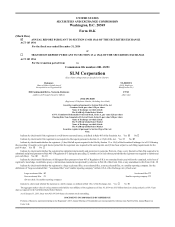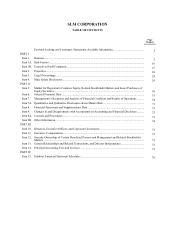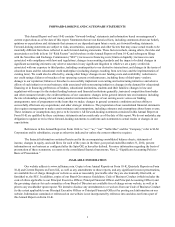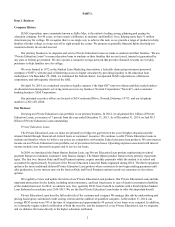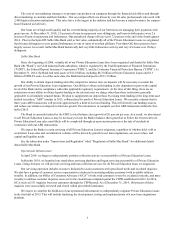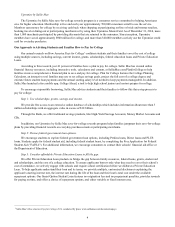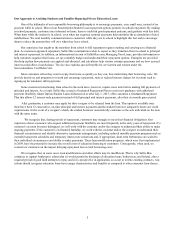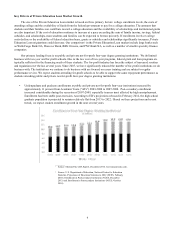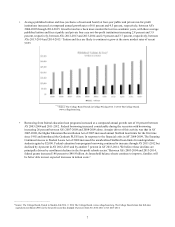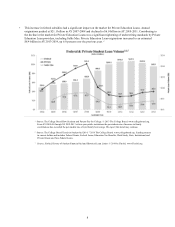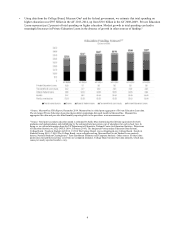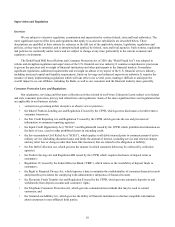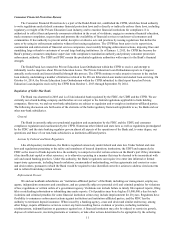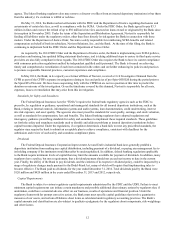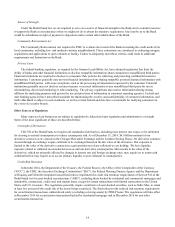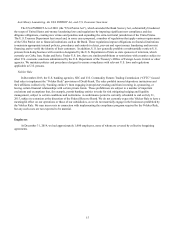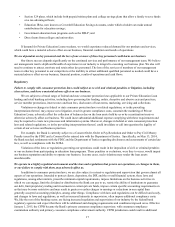Sallie Mae 2014 Annual Report Download - page 9
Download and view the complete annual report
Please find page 9 of the 2014 Sallie Mae annual report below. You can navigate through the pages in the report by either clicking on the pages listed below, or by using the keyword search tool below to find specific information within the annual report.
•Average published tuition and fees (exclusive of room and board) at four-year public and private not-for-profit
institutions increased at compound annual growth rates of 6.0 percent and 4.5 percent, respectively, between AYs
2004-2005 through 2014-2015. Growth rates have been more modest the last two academic years, with these average
published tuition and fees at public and private four-year not-for-profit institutions increasing 2.8 percent and 3.9
percent, respectively, between AYs 2012-2013 and 2013-2014 and 2.9 percent and 3.7 percent, respectively, between
AYs 2013-2014 and 2014-2015.3 Tuition and fees are likely to continue to grow at the more modest rates of recent
years.
_______
3 Source: The College Board-Trends in College Pricing 2014. © 2014 The College Board.
www.collegeboard.org.
•Borrowing from federal education loan programs increased at a compound annual growth rate of 10 percent between
AY 2003-2004 and 2011-2012. Federal borrowing increased considerably during the recession with borrowing
increasing 26 percent between AYs 2007-2008 and 2008-2009 alone. A major driver of this activity was that in AY
2007-2008, the Higher Education Reconciliation Act of 2005 increased annual Stafford loan limits for the first time
since 1992 and introduced the Graduate PLUS loan. In response to the financial crisis in AY 2008-2009, The Ensuring
Continued Access to Student Loans Act of 2008 increased the unsubsidized Stafford loan limits for undergraduate
students again by $2,000. Federal education loan program borrowing continued to increase through AY 2011-2012 but
declined by 4 percent in AY 2012-2013 and by another 7 percent in AY 2013-2014. We believe these declines are
principally driven by enrollment declines in the for-profit schools sector.4 Between AYs 2003-2004 and 2013-2014,
federal grants increased 186 percent to $48.9 billion. As household balance sheets continue to improve, families will
be better able to meet expected increases in tuition costs.5
_________________________
4 Source: The College Board-Trends in Student Aid 2014. © 2014 The College Board. www.collegeboard.org. The College Board states that full-time
equivalent enrollment (FTE) in the for-profit sector has dropped 23 percent from AY 2010-2011 to AY 2013-2014.
7

